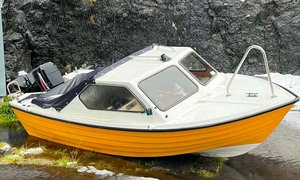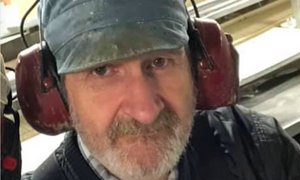Offshore Faroes 2003
JEREMY CRESSWELL
.
Not only is it a lifeline to Sullom Voe, getting this giant of a field onstream will be the end of a 27-year haul, given that Clair was located west of Shetland in July 1977.
Development has been shelved at least once. But now the project is unstoppable, with construction past the halfway mark and apparently on track.
Clair is a monster in more ways than one. It?s not just huge (220sq.km), with reserves estimates ranging from 3billion to more than 4billion barrels of heavy crude, unravelling her geological secrets proved a nightmare. That was not achieved until the late 1990s.
Real contractor engagement did not start until the end of 1999, once it had been decided what would needed ? a stripped down, to the point approach without North Sea-style ?gold-plating?.
The best in class role model selected was Pompano, a BP-operated Gulf of Mexico platform from which a fit-for-purpose derivative suited to North-west Europe conditions was evolved.
After several false starts and partner friction, Clair was finally ready for sanction in 2001. That came symbolically when, in November that year, Energy Minister Brian Wilson gave it the green light.
Phase-1 concentrates on the core, Graben, and Horst segments in the southern area of the field, with estimated oil in place of approximately 1.75billion barrels of which 287million might be recoverable over a 24-year period.
Depending on how Phase-1 works out, further development is possible, with a recoverables target of 400mmb, though there is informal talk of more than 500mmb.
Clair development is based on a single large, steel jacket platform located in 165m of water, with output based on 15 production wells, eight water injectors, and one drill cuttings re-injection well. First oil is anticipated in Q3 2004, with daily output expected to peak around 60,000 bpd of oil and 15 million cu.ft of gas.
Ramping up oil production will be a gradual process as wells are progressively drilled using the platform?s own drilling package. One is being pre-drilled and will be first onstream.
?Then the (platform?s) rig will drill the remaining wells of the Phase-1 development,? said project director Terry Hughes.
?We currently have a 25-well programme and, while we could change it, at the same time we?ve come to the conclusion that we need four or five years of production history under our belt before we have sufficient information to enable us to make sensible decisions on possible changes to the drilling plan.
?It will take six years to drill and put all these wells in place.?
Meanwhile, under the original plan, the Clair pipeline was to be laid next year, but the decision was made to install it summer 2003, in case 2004 turns out to be a bad weather year west of Shetland.
Platform fabrication is in the hands of Aker Kværner (jacket) and Amec (topsides). Many small suppliers and sub-contractors also have work and, overall, construction is comfortably past the halfway mark.
Construction is currently at peak, with roughly 1,800 tradespersons and engineers employed in various locations, mostly at Verdal in Norway and Wallsend on Tyne in England.
Load-out will take place next summer, with the expectation at BP that first oil will be achieved before winter sets in.
BP is operator with 28.6% interest. Partners are Conoco (24%), ChevronTexaco (19.4%), Enterprise Oil (18.7%), and Amerada Hess (9.3%). The field covers blocks 206/7a; 206/12; 206/8; 206/13a; and 206/9, but is centred in Block 206/8.
(Henda greinin skuldi vera við í serblaðnum um oljuvinnu í gjár, men vegna plásstrot kemur hon fyrst nú). Jeremy Cresswell telist millum fremstu oljujournalistarnar í Skotlandi og helt hann fyrilestur á ráðstevnuni í Norðurlandahúsinum í gjár).














